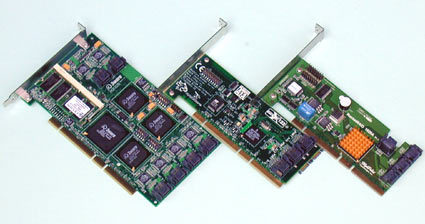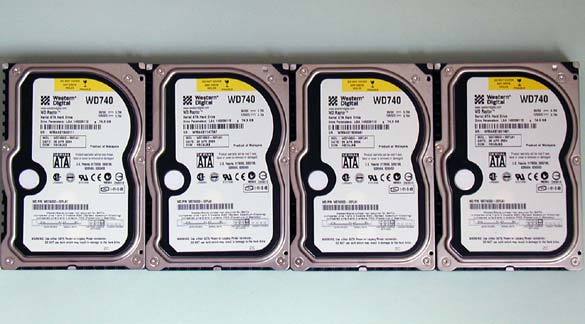Multi-channel RAID for SATA: 3Ware, Highpoint and Raidcore/Broadcom
Eight And 12 Channels Come On-stream
Following our test of numerous four-channel controllers we looked at eight-channel solutions based on very different approaches.
3Ware's entry comprised the 9000 Series, based on the tried and tested StorSwitch architecture, and served as a pure hardware solution. Meanwhile, Highpoint offered a software-based solution in its RocketRAID 1820A. There are also changes in Raidcore's offering. For example, its series is now called BC4000, and works with a chip from its new parent Broadcom. The device also has a software layer that offers a high level of functionality.
The main applications for Serial ATA RAID controllers with a large number of ports are for near-line storage applications with large capacity requirements and servers with low to medium transaction volumes, as well as video and audio editing in a professional context. The technology thus accommodates small- and medium-sized companies with demanding and large-scale business processes.
Differences between expensive SCSI RAID solutions and the relatively affordable SATA controllers become evident as the performance requirements rise. In the case of insecure RAID 0 arrays, SCSI offers few performance advantages, while the I/O and transfer performance with fast drives in RAID 5 turn out better as a general rule. Also, SCSI drives are more suitable and even specifically intended for intensive use on a permanent basis, so that SCSI components are still indispensable for heavily used servers.
Hard Disks: WD740 And Hitachi 7K250
The Hitachi 7K250, with a capacity of 160 GB in each case, was used for the eight-channel test. Broadcom was good enough to make these drives available. In contrast to that, however, we also fell back on four Raptor drives from Western Digital, because the 74 GB WD740 model in particular already supports tagged command queuing, and benefits noticeably from this feature when operating under heavy I/O load. Also, the WD740 is still by far the fastest SATA drive on the market.
Command queuing allows the drives to analyze incoming commands and to process them in the most timesaving sequence possible. The rotation of the storage disks is taken into account in the process, as is the necessary movement of the write/read heads. Data flow speed advantages depend on the application.
Get Tom's Hardware's best news and in-depth reviews, straight to your inbox.
Current page: Eight And 12 Channels Come On-stream
Next Page 3Ware/AMCC 9000 Series
Patrick Schmid was the editor-in-chief for Tom's Hardware from 2005 to 2006. He wrote numerous articles on a wide range of hardware topics, including storage, CPUs, and system builds.

